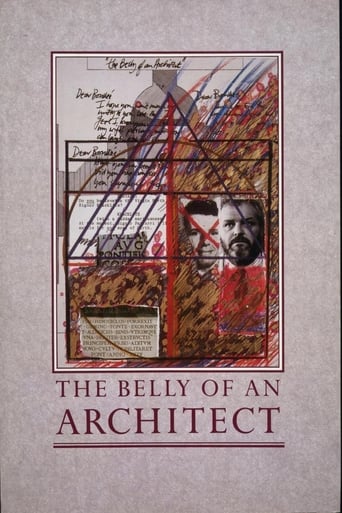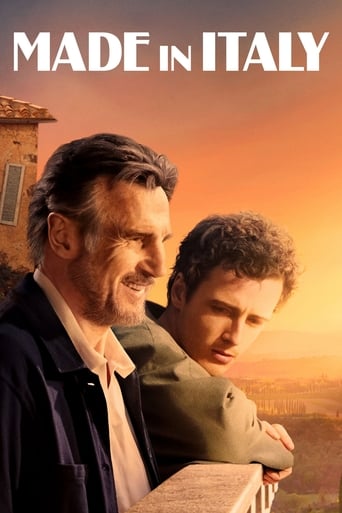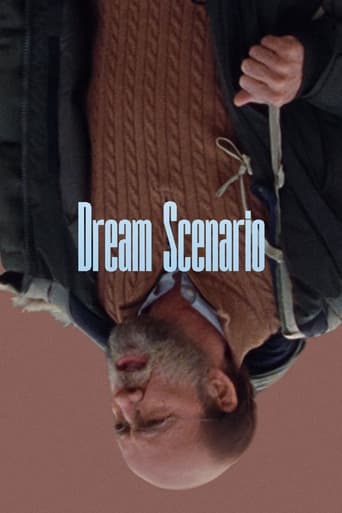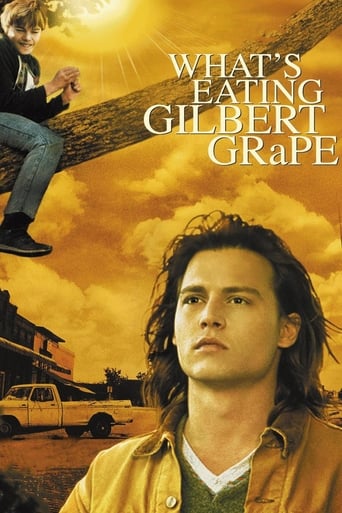Best movies & TV Shows like Meraviglie. La penisola dei tesori
A unique, carefully handpicked, selection of the best movies like Meraviglie. La penisola dei tesori Starring Alberto Angela, and more. If you liked Meraviglie. La penisola dei tesori then you may also like: Cellini: A Violent Life, The Agony and the Ecstasy, The Belly of an Architect, Big Night, Certified Copy and many more popular movies featured on this list. You can further filter the list even more or get a random selection from the list of similar movies, to make your selection even easier.
The beautiful Italy
You may filter the list of movies on this page for a more refined, personalized selection of movies.
Still not sure what to watch click the recommend buttun below to get a movie recommendation selected from all the movies on this list
The Agony and the Ecstasy
During the Italian Renaissance, Pope Julius II contracts the influential artist Michelangelo to sculpt 40 statues for his tomb. When the pope changes his mind and asks the sculptor to paint a mural in the Sistine Chapel, Michelangelo doubts his painting skills and abandons the project. Divine inspiration returns Michelangelo to the mural, but his artistic vision clashes with the pope's demanding personality and threatens the success of the historic painting.
The Belly of an Architect
The American architect Kracklite arrives in Italy, supervising an exhibiton for a French architect, Boullée, famous for his oval structures. Tirelessly dedicated to the project, Kracklite's marriage quickly dissolves along with his health.
Certified Copy
In Tuscany to promote his latest book, a middle-aged English writer meets a French woman who leads him to the village of Lucignano.
Contempt
A philistine in the art film business, Jeremy Prokosch is a producer unhappy with the work of his director. Prokosch has hired Fritz Lang to direct an adaptation of "The Odyssey," but when it seems that the legendary filmmaker is making a picture destined to bomb at the box office, he brings in a screenwriter to energize the script. The professional intersects with the personal when a rift develops between the writer and his wife.
The Prime of Miss Jean Brodie
A headstrong young teacher in a private school in 1930s Edinburgh ignores the curriculum and influences her impressionable 12-year-old charges with her over-romanticized worldview.
Il Posto
With his family mired in financial troubles, Domenico moves to Milan, Italy, from his small town to get a job in lieu of furthering his education. A lack of options forces him to take a position as a messenger at a big company, where he hopes to receive a promotion soon. There, Domenico meets Antonietta, a young woman in a similar situation as himself. The two form a tentative relationship, but the soulless nature of their jobs threatens to keep them apart.
The Passenger
David Locke is a world-weary American journalist who has been sent to cover a conflict in northern Africa, but he makes little progress with the story. When he discovers the body of a stranger who looks similar to him, Locke assumes the dead man's identity. However, he soon finds out that the man was an arms dealer, leading Locke into dangerous situations. Aided by a beautiful woman, Locke attempts to avoid both the police and criminals out to get him.
The Lost Leonardo
London, England, 2008. Some of the most distinguished experts on the work of Italian artist Leonardo da Vinci (1452-1519) gather at the National Gallery to examine a painting known as Salvator Mundi; an event that turns out to be the first act of one of the most fascinating stories in the history of art.
Made in Italy
A bohemian artist travels from London to Italy with his estranged son to sell the house they inherited from his late wife.
Manufactured Landscapes
MANUFACTURED LANDSCAPES is the striking new documentary on the world and work of renowned artist Edward Burtynsky. Internationally acclaimed for his large-scale photographs of “manufactured landscapes”—quarries, recycling yards, factories, mines and dams—Burtynsky creates stunningly beautiful art from civilization’s materials and debris.
Modigliani
Set in Paris in 1919, biopic centers on the life of late Italian artist Amedeo Modigliani, focusing on his last days as well as his rivalry with Pablo Picasso. Modigliani, a Jew, has fallen in love with Jeanne, a young and beautiful Catholic girl. The couple has an illegitimate child, and Jeanne's bigoted parents send the baby to a faraway convent to be raised by nuns.
Stay As You Are
A May-December romance. Roué Giulio Marengo, a Roman landscape architect unhappy in his marriage, meets Francesca, a young and beautiful Florentine, and then learns she might be his daughter. He resolves to keep his hands off but can't seem to stay away, and she's eager for a lover who's a father figure.
Neapolitan Diary
A screening of the 30 year old Hands Over The City at the School of Architecture in Naples is the occasion for a debate among youth, historians, politicos, industrialists, environmentalists.
First Person Singular: I.M. Pei
Architect I.M. Pei speaks about his famous works, such as the addition to the Louvre in Paris, the East Wing of the National Gallery of Art in Washington, D.C., and the Meyerson Symphony Center in Dallas, Texas. Footage of these projects shows both interiors and exteriors. Various other experts comment on the impact and importance of Pei's work.
Secrets of Florence
Using a thermo-camera to reveal long-lost artworks and never-before-seen architectural layers in some of the city's most famous landmarks, Art detective Maurizio Seracini reveals an unsavory history.
Nina
The contemporary architecture of Rome are at the heart of the beautifully shot and winsomely appealing Nina, which charts the oddball escapades of a young woman in a depopulated Rome during one hot summer. This heartwarming tale of a lonesome girl who teaches singing and dog-sits during her holidays on the outskirts of Rome. Its striking cinematography evokes Nina's indefinable anxiety. By opening herself up to life she conquers a vision of her future full of imagination and beauty.
CBS News Sunday Morning
The sparkling notes of a trumpet fanfare and the familiar logo of the sun alert viewers that it's time for CBS's Sunday morning staple. Journalist Jane Pauley helms the show, taking over hosting duties from Charles Osgood, who spent 22 years on the job. A morning talk show, this program airs at a different pace and focuses much of its attention on the performing arts. After a quick update of the day's news and national weather, correspondents offer longer-length segments on a variety of topics, from architecture to ballet to music to pop culture to politics.
Engineering an Empire
Engineering an Empire is a program on The History Channel that explores the engineering and/or architectural feats that were characteristic of some of the greatest societies on this planet. It is hosted by Peter Weller, famous for his acting role as RoboCop but also a lecturer at Syracuse University, where he completed his Master's in Roman and Renaissance Art. The executive producer is Delores Gavin. The show started as a documentary about the engineering feats of Ancient Rome and later evolved into a series. It originally ran for one full season of weekly episodes.
The Culture Show
A weekly BBC Two magazine programme focusing on the best of the week's arts and culture news, covering books, art, film, architecture and more.
The Life of Leonardo da Vinci
La vita di Leonardo da Vinci — in English, The Life of Leonardo da Vinci — is a 1971 Italian television miniseries dramatizing the life of the Italian Renaissance polymath Leonardo da Vinci. The Golden Globe-winning miniseries was directed by Renato Castellani, and produced by RAI and distributed in the United States by CBS, which aired it from August 13, 1972 to September 10, 1972. Castellani wrote the screenplay. It was filmed entirely on location in Italy and France. The total runtime of the five episodes is nearly five hours.
Civilisation
Sir Kenneth Clarke guides us through the ages exploring the glorious rise of civilisation in western man. Beginning with the bleakness of the dark ages to the present day, we consider civilisation's articulations and expressions in some of man's finest works of art.
Rick Steves' Europe
Rick Steves, America's leading authority on European travel, returns to transport viewers to the continent's bustling cities, quaint villages and picturesque countryside.
Byzantium: The Lost Empire
John Romer recreates the glory and history of Byzantium. From the Hagia Sophia in present-day Istanbul to the looted treasures of the empire now located in St. Marks in Venice.
Fred Dibnah's Building of Britain
Fred Dibnah reveals the genius, the vision and the sheer bloody graft that went into creating some of Britain's greatest national monuments. All six episodes look at Britain's architectural heritage. In 'Mighty Cathedrals' Fred examines the innovations in building techniques which allowed the Normans to build some of the nation's most remarkable cathedrals. 'The Art of Castle Building' has Fred take a look at the castles of the North Wales coastline. 'The Age of the Carpenter' sees Fred learn all about the way that carpenters have used their skills to transform medieval castles into homes. In 'Scottish Style' Fred visits Glamis Castle and learns about the Scottish Baronial Style. 'Building the Canals' has Fred visit Bolton and learn about the construction of the first canals. Finally, 'Victorian Splendour' sees Fred looking at the achievements of architects in the 19th century and discovering the story behind the building of the Palace of Westminster and Big Ben.
Art of the Western World
First broadcast on October 2, 1989, these 18 original 30-minute episodes provide a panorama of 2000 years of architecture, painting and sculpture, and studies the art masterpieces as reflections of the Western culture that produced them.
The High Art of the Low Countries
This 3 part series is presented by the British Art Critic, Andrew Graham-Dixon. He explores the Low Countries of the Netherlands and Belgium and how history has influenced the area's art, architecture and culture. Cloth was used in the area's first expression of art in the making of tapestries going back to the 14 th century. They were the No. 1 luxury item of the day. The Low Countries were well placed geographically for markets for their art.
Byzantium: A Tale of Three Cities
Simon Sebag Montefiore uncovers the three identities of the city some call the Centre of the World: Byzantium, Constantinople and Istanbul. This one metropolis has been the capital city of three empires - Roman, Byzantine and Ottoman. Each brought its own faiths, Gods and traditions, and each left its mark on the city in its architecture, traditions and in the living faith-communities who still populate this vast modern metropolis of 14 million people.
Bunkers Brutalism and Bloodymindedness
Two-part documentary in which Jonathan Meades makes the case for 20th-century concrete Brutalist architecture in an homage to a style that he sees a brave, bold and bloodyminded. Tracing its precursors to the once-hated Victorian edifices described as Modern Gothic and before that to the unapologetic baroque visions created by John Vanbrugh, as well as the martial architecture of World War II, Meades celebrates the emergence of the Brutalist spirit in his usual provocative and incisive style. Never pulling his punches, Meades praises a moment in architecture he considers sublime and decries its detractors.
Secrets of Britain
The enormous popularity of recent British dramas such as Downton Abbey, Mr. Selfridge, and Sherlock, has led to vast interest in the real-life stories and history of the icons of Great Britain. Each episode of this series visits a famous British building or institution to explore its past and present, meeting a wide range of experts and historians along the way.
How Buildings Learn
Based on his book, American writer Stewart Brand takes a look at the life history of buildings - how they're shaped by their architects, and how they're further shaped by their inhabitants.
Saints and Sinners: Britain's Millennium of Monasteries
Janina Ramirez discovers how monasteries shaped all aspects of medieval Britain and created a dazzling array of art, architecture and literature, a story of faith, sacrifice, violence and corruption.
Italy's Invisible Cities
Using the latest 3D scanning technology, Alexander Armstrong and Dr Michael Scott uncover the hidden history of Italian civilisation and city life.
Rome Unpacked
Andrew Graham-Dixon and Giorgio Locatelli's latest Italian adventure brings them to Rome in search of the greatest food and art that they can find off the beaten track.
The Greeks: Crucible of Civilization
In the fourth and fifth centuries, B.C., the Greeks built an empire that stretched across the Mediterranean from Asia to Spain. They laid the foundation of modern science, politics, warfare and philosophy, and produced some of the most breathtaking art and architecture the world has ever seen. It was perhaps the most spectacular flourishing of imagination and achievement in recorded history.
Wonders of Mexico
Entering a sacred monument is never an unremarkable experience. Whether a place of worship for Christians, Jews, Muslims, Hindus or Buddhists, the buildings all tend to be architecturally magnificent. And behind the stone, brick, or marble facades are hidden stories of titanic construction sites where brilliant architects, builders and artists came together... From the West to the Far East, these monuments are the concrete witnesses of men's beliefs and of their desire to excel, as well as reminders of their will for political dominance. This series, set in the present day, is about discovering some of the world’s most beautiful and sacred monuments, from Italy to Hungary via France, and on to India, Tunisia and even Myanmar... During each episode we spend a day, from sunrise to sunset, at one of the monuments and learn about its history and architecture, as well as the rituals practiced there, and the people who take care of it.
Ancient Invisible Cities
Explores the hidden secrets of three of the most fascinating cities of the ancient world: Cairo, Athens and Istanbul. 3D scans allow us to view the architectural jewels of these cities as they've never been seen before.
The Art of Architecture
An exploration of some of the world's most famous structures and the inspirations of the architects behind them.
Inside Monaco: Playground of the Rich
A look inside the famous Casino de Monte Carlo, where the present fortunes of Monaco began. Its impressive architecture conjures up an era of exotic glamour but it no longer provides the vast revenues it once did. They have to work hard to attract the new wealthy, especially from Asia, where the approach to gambling is very different.
Makari
Saverio Lamanna, a journalist turned spokesman for an influential government politician, is fired after committing imprudence at work. Defeated both emotionally and professionally, Saverio decides to leave Rome and return to Màkari, his birthplace in Sicily: here he rediscovers a great passion that has remained dormant for years, that of the writer. Driven by the curiosity that characterizes him, Saverio decides to improvise as an investigator and investigate the various local cases, forming an unlikely trio together with the eccentric and light-hearted friend Peppe Piccionello and the determined architecture student Suleima.
The Cabin Chronicles
Exploring the architecture, design and human connection behind beautiful cabins and their surrounding landscapes.
Hermitage Masterpieces
Formerly the palace of Czars, the Hermitage in St. Petersburg is now one of the world's largest museums, drawing three and a half million visitors per year. This superbly mastered DVD series is a guided tour of the works in the galleries as well as a compelling lesson in art history. The 540 minute series examines some of the sculptures, paintings, tapestries, and glassware pieces found within the four pavillions, as well as the impressive European-style architecture of the museum itself. Researched and authenticated by the Hermitage Museum and lavishly photographed, the series covers such styles as Classical, Neo-Classical, Baroque, Gothic, Impressionism, Post-Impressionism, and Cubism. As well, it showcases works by such masters as Rodin, Goya, Da Vinci, Van Gogh, Matisse and Picasso. Be captivated by the history and culture of this breath taking collection of visual art masterpieces.
Beach Cottage Chronicles
Discover the inspired designs, architecture and stories behind some of the most beautiful waterfront cottages in America. With each unique home, experience a firsthand look at the joy that comes from living on the water.
From Paris to Rome with Bettany Hughes
Bettany Hughes follows in the footsteps of 18th century aristocrats going on a Grand Tour as she travels through France and Italy to see how travel, the arts and culture and the finest foods can enrich and inspire our lives.
Lightlapse
A collection of cinematic visuals and time-lapse scenes captured throughout the world.
The Prado Museum: A Collection of Wonders
Actor Jeremy Irons embarks on an epic journey through the halls of the Prado Museum in Madrid, Spain, two hundred years after its inauguration, along corridors where thousands of masterpieces of all time tell the lives of rulers and common people, and tales about times of war and madness and times of peace and happiness; because, as Goya said, imagination, the mother of the arts, produces impossible monsters, but also unspeakable wonders.

































































Cellini: A Violent Life
The story of Benvenuto Cellinin (1500-1571), a soldier and one of the most important craftsmen and artists of Renaissance Italy whose life was marked by many achievements and adventures, but also crimes. There is also the mini-series version consisted of three 90 minutes episodes, broadcasted by RaiDue.